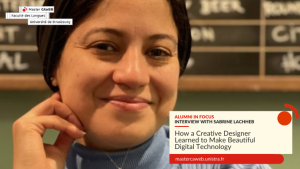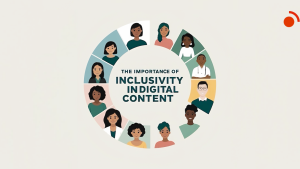A Linguistics Degree: A Stepping Stone to a Career in UX

Gone are the days when linguistics graduates needed a master’s in computational linguistics or NLP to enter the tech world. In 2025, a linguistics degree opens doors to diverse opportunities, and one of the most natural fits is UX design.
Why? Because linguistics equips you with both a skillset and a mindset that are highly relevant and in demand in UX.
How UX and Linguistics Intersect
At its core, user experience (UX) is about how people feel when they interact with a product or service. At the center of every interaction is language. From button labels and menus to instructions and error messages, words guide actions, set expectations, and shape the overall experience.
When language fails, the experience fails. A government website that hides important forms behind unclear labels or an app that delivers a jargon-filled error message leaves users confused and frustrated. These are not just design flaws—they are linguistic flaws.
Linguistics provides tools to anticipate these breakdowns. Its methods and insights can be applied directly in UX to improve usability and make experiences smoother and more intuitive.
The Skills Linguistics Brings to UX
Linguistics is not just academic theory—it builds practical skills that translate directly into UX work.
Research Skills
UX begins with understanding users. This involves designing surveys, running interviews, and analyzing data. Linguists are trained in both qualitative and quantitative research, giving them a head start in uncovering what users truly mean beneath the surface.
Pattern Recognition and Data Analysis
Observation and analysis are second nature to linguists. They spot recurring patterns, even when users express ideas differently, and detect subtle nuances others might miss. In UX, this skill helps transform user feedback into actionable insights that improve product design.
Writing Skills
Every interaction with a digital product is mediated through language. Microcopy, error messages, navigation labels, and onboarding flows are all touchpoints of communication between a brand and its users.
For example:
- Poor UX writing: “Invalid input.”
- Strong UX writing: “Your transfer didn’t go through because the recipient’s account number has 9 digits instead of 10. Please check and try again.”
Linguists are trained to anticipate misinterpretations, evaluate clarity, and adjust tone for different audiences. This makes them uniquely equipped to identify potential communication breakdowns and craft copy that truly guides users.
The Mindset Linguistics Cultivates for UX
Empathy and Curiosity
UX starts with understanding users. Linguistics encourages a descriptive approach to language, observing how people actually communicate rather than prescribing how they should. This fosters empathy and curiosity over judgment. Instead of asking, “How do we make them do it right?”, a linguist asks, “Why do they do it this way?” This perspective is essential for effective user research.
Problem-Solving
UX is about solving real problems, not just designing experiences. Linguistics trains you to approach problems systematically. You learn to analyze patterns, question assumptions, and understand why something works—or doesn’t. Studying language also helps you break down complex information, spot root causes of misunderstandings, and develop evidence-based solutions. In UX, this means designing products that genuinely solve users’ problems.
Communication
UX design requires constant communication—with users, stakeholders, teammates, and cross-functional teams. You’ll be explaining ideas, sharing research insights, and collaborating with people who see the world differently from you. Linguistics gives you a head start: you notice how people interpret language, anticipate where messages might get lost, and adjust your communication so it connects with everyone involved.
Master CAWEB: Bridging Linguistics and UX
A linguistics degree can be a strong foundation for UX, but only if it is paired with technical skills. Master CAWEB is a great opportunity for students with a linguistics background who want to transition into tech.
The program offers a flexible, hands-on master’s in multilingual web communication. It combines a UX specialization with web development, localization, and digital marketing, providing students with both practical experience and a solid theoretical foundation.
If you’re ready to pursue a rewarding career in UX and multilingual communication, the Master CAWEB program is worth considering. This affordable online degree aligns with your career goals while equipping you with the skills needed to succeed in the competitive UX landscape.
Written by Burak KONMUS
Other articles
-

Discover our online Master in digital communication
-

An Introduction to Usability Testing Methods
-

The 5 major UX/UI Design trends in websites for 2022
-

7 Reasons to Pursue UX Design Training Linked with the CAWEB Master’s Program
-

How creative designer learned to make beautiful digital technology


